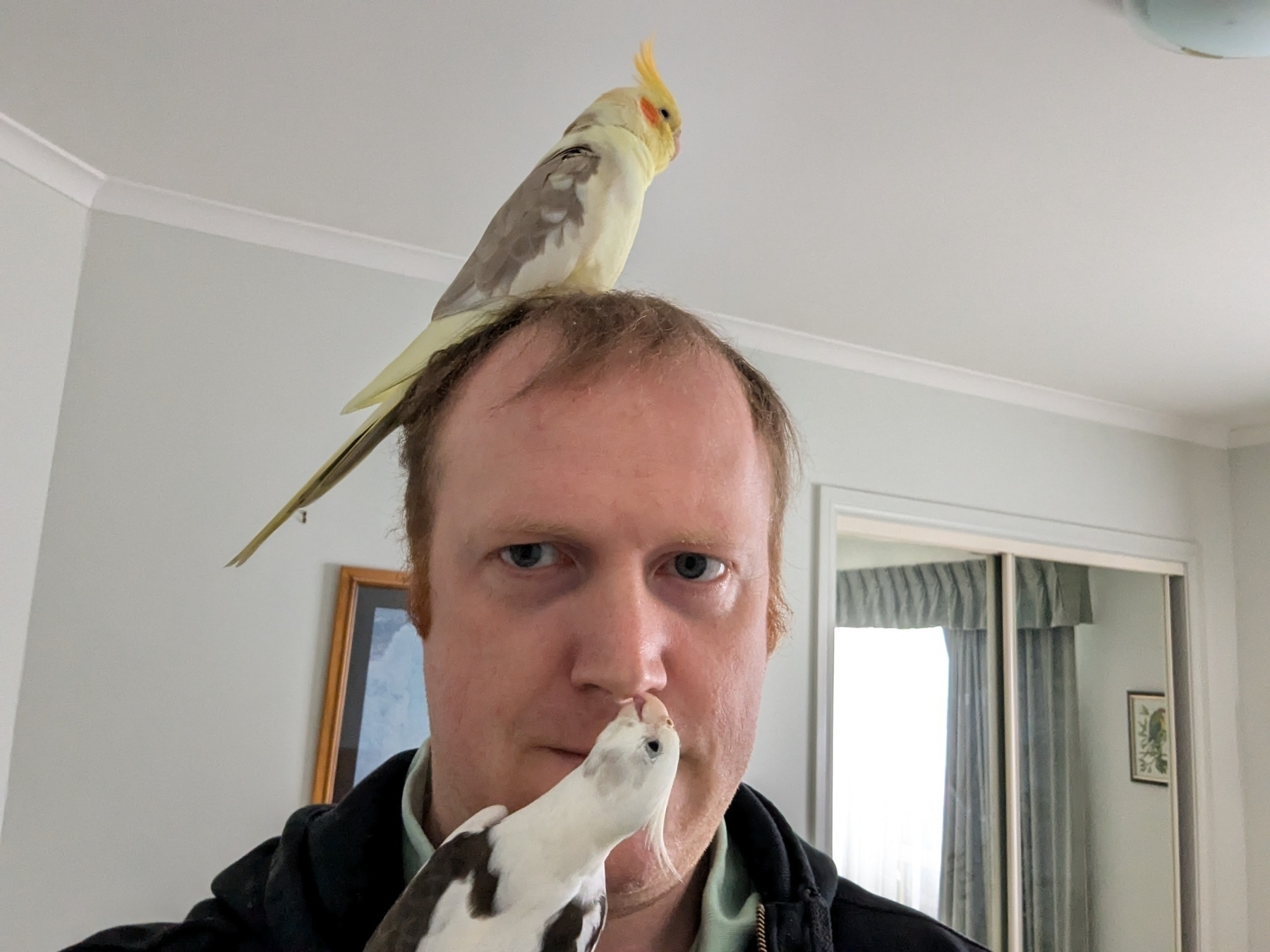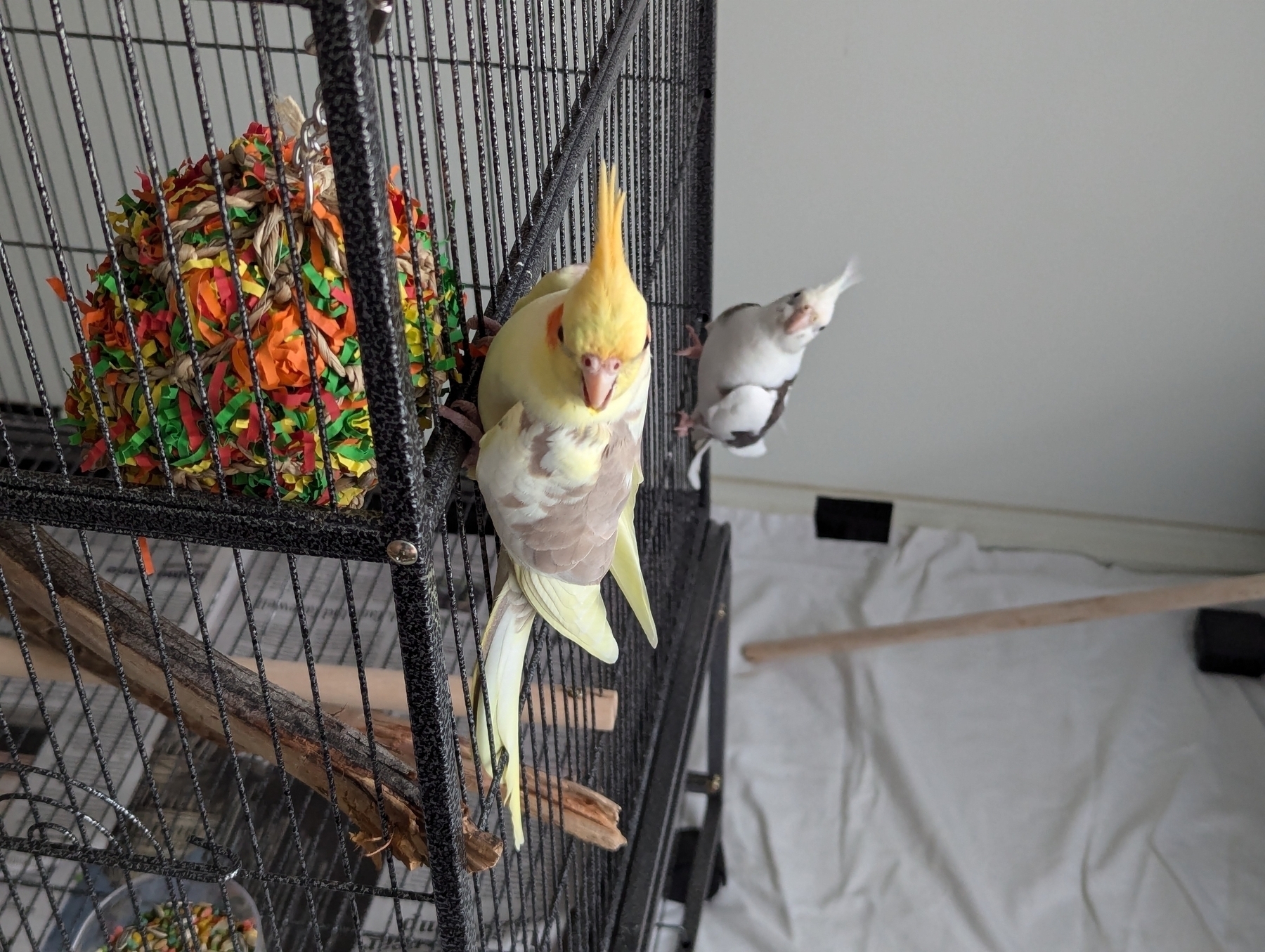-
So MacOS Sequoia is going to introduce weekly nag prompts for app permissions, with no way to just grant permissions for an app perpetually. Hey, Apple: why do it weekly? Why not ask every 15 minutes? Why not blank out my screen and show it as a modal? That way, you can wrestle my attention from what I’m trying to do just so you can get my answer that yes, once again, the app that I launch every day to do my work can continue to have the permissions I granted it years ago.
Does Apple not trust their users? It’s bad enough that they ask whether an app can continue to send notifications after an update, but doing this seems like they think there are zero users of their OS that know what they’re doing. Not saying that everyone needs to be MacOS power-users, but rolling out designs like this without providing an escape hatch for those that are is not only annoying, it’s borderline offensive.
I’m sorry if this comes off as a little strong. But these usability paper-cuts add up.
-
Want an easy way to break a code editor? Accidentally click the “expand all” button in a project tree panel that has loads of external modules and dependencies. Bonus points for anyone with
node_modules, although I think that might be playing on easy mode. 😀 -
Needed to do something to one of our databases, and I was preparing a multi-step process before I decided to check whether one of my admin tools could help. Turns out the tool had a command to do just the thing I needed to do. Thanks, past me!
-
It’s disappointing to see Google discontinue their Chromecast line. There are certain use-cases that a small, simple, dongle is perfect for that an overpriced streaming box is not, such as travelling or setting up a dumb TV projector for a meeting room. Plus, an underpowered device makes it harder for app developers to load their Chromecast UI with rubbish (although they try).
I don’t use my Chromecast anymore, but I did for a long time. It was the only way I watched TV. I’m sad to see it go, but I guess the Google graveyard comes for all in the end.
-
I’ve been using Album Whale as a song-based bookmarking service more and more recently. When there’s a specific track I want to listen to, it’s much easier to recall it from Album Whale, rather than try to navigate Spotify’s annoying UI (Spotify is just unable or unwilling to make this easy to do).
-
My recent exploration of Fyne has got me looking at building a level editor again. Have started work on the viewport, with camera movement using the WASD keys, and a basic mouse tracker for painting cells. Feels pretty good so far, although the cell mouse tracker might need some refinement.
-
👨💻 New post on AWS over at Coding Bits: Force Deleting AWS Secrets
-
Continuing my exploration of mutual TLS for secure inter-service communication. Wondering how best to include in the certificate what type of service the certificate is for. The best options I can think of is either using the subjectDirectoryAttributes extension, or just using a CN encoded as a URI, with the scheme encoding the type.
This is one of those trade-offs between an approach that’s easy, vs. an approach that’s “correct”. I imagine the “correct” way to do this is to add an attribute to the certificate indicating the service type. This is probably what this extension is for, and even without using it, I don’t think there’s anything about the X.509 format which would prevent me from just adding a custom attribute, apart from the various RFC’s that govern how certificates are exchanged online (this is for internal services, so I can’t imagine that being a problem.)
But even so, I’m learning towards using the URI. Although I can probably organise an OpenSSL config file which enables support for this extension — something that is not guaranteed — I’m worried that if I were to start handing off certificate creation to others, they would need to do likewise. Sure, tooling could help here, but we’ll all need to support that too. Not to mention a vast majority of the documentation out there is about using OpenSSL for creating HTTPS server certificates (apart from, I guess, the documentation on OpenSSL itself, but I don’t think I’m ready for that yet).
So I’m going to keep it simple for now. I guess if the need arises, I could look at this extension in the future.
-
🔗 Own Your Web – Issue 15: Home Sweet Home
It’s good to see Own Your Web is still going. I really enjoy reading this newsletter and I was disappointed for a time when issues stopped being published reguarily some months ago. Good thing I kept the RSS feed around.
-
Spending some time with the birds. Archie’s on heat, which is why she’s making those chirping noises. Ivy’s happily keeping to herself off to the side.
-
Falling behind on posting a couple of weekly ear-worms, so here are two:
Last week’s: Before Too Long, by Paul Kelly
This week’s: An Extraordinary Life, by Asia (this one via Reconcilable Differences).
🎵
-
It’s been — what, 5-6 years — since I moved from Xubuntu to MacOS, and yet I still find myself wising for certain features present on Linux desktops that are not on MacOS. Usually it’s around how window switching works, but today, it’s the option to keep a window always at the top.
-
And here I was thinking that successfully using OpenSSL to setup and test a custom CA was the most exciting thing that happened today. Nope! Just check the mail and I’ve been asked to attend jury duty, for the first time in my life. Finally!
Yep, I’m the strange one here. 😏
-
I have to set up mutual TLS authentication using our own CA for inter-service communication. I found this guide on how to prepare the certificates using openssl to be really useful. There’s also this tool which looks interesting.
-
Who thought that doing something properly would get results? I’ve been hacking around for the past hour trying to get a CI/CD pipeline to work, with no success. I then decided to change the pipeline properly, and it worked the first time.
-
👨💻 New post on Go over at Coding Bits: Disabling Imported Jobs In Gitlab CI/CD Pipeline
-
🔗 AI ‘Friend’ Company Spent $1.8 Million and Most of Its Funds on Domain Name
“It’s real! Premium domains are expensive, but it’s worth it,” Schiffman told me in an email after I reached out to ask if it was true. […] “People just don’t get consumer, I view this as saving money. Much less money needs to be spent on marketing, it’s a one time thing,” Schiffmann said.
Is the marketing in the domain name, or in the word of mouth about how much they spent on the domain name? Well, I guess they got me to talk about it. 😀
-
I wonder who Amazon thinks are visiting the websites for AWS resources. They build landing pages full of copy that seems to be written for CTOs and people shopping around for solutions. Yet, I imagine most visitors to these sites are developers, trying to get to the reference documentation.
-
Archie is quite the photogenic bird.

-
Got treated to an “Ivy facial” today.

-
Current Project Update
Hmm, another long gap between posts. A little unexpected, but there’s an explanation for this: between setting up Forgejo and making the occasional update to Blogging Tools, I haven’t been doing any project work. Well, at least nothing involving code. What I have been doing is trying my hand at interactive fiction, using Evergreen by Big River Games. Well, okay, it’s not completely without code: there is a bit of JavaScript involved for powering the “interactive” logic part. Continue reading →
-
The guests have arrived. 🦜

-
A lot will be happening this coming week. In fact, it feels like the whole year has been building up to it. Mum and Dad will be hosting some guests coming in from overseas, at the same time some distance cousins from Italy are over here. And I’ll be hosting some birds “flying in” from Canberra (they’re being driven in actually). Routines will be distrupted, but I think it’s going to be pretty good.
-
Mesdames et messieurs: voici la tentative d’aujourd’hui de passer à un petit-déjeuner plus minimaliste: deux grands cafés au lait.
Ladies and gentlemen: presenting today’s attempt to move to a more minimalist breakfast: two large cappuccinos.

-
Just listening to Ben Thompson’s and Andrew Sharp’s hot takes on baseball on the latest episode of Sharp Tech. My suggestion to Ben would be to try watching a game of test cricket some day. Sounds to me like they share many of the same attributes that Ben likes about baseball. 😄